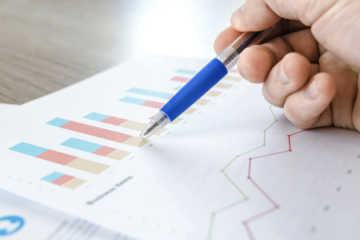How To Make Data-Driven Decisions

I’ve mentioned this many times in my blog on making data-driven decisions. But what does this exactly mean?
Well, to put it simply, data driven decisions means looking at the mass customer behavior on your business AND the market, and to base your decisions on what’s going on.
All data-driven decisions are bets, there are high likelihood bets of succeeding and low likelihood bets of succeeding. But the worst thing you can do is to make decisions based on your confirmation bias.
You see, everyone has a sort of confirmation bias going on inside of them. They have assumptions about the market, about other people that they came to their own conclusion after thinking things through.
I want to challenge you to say that, although your thinking has validity as you’ve gone through a process to come to a conclusion. You must never ignore the data out there. Perhaps the data out there will challenge your confirmation bias, then this means your approach to whatever you’re having must change.
I want to give you an example. You are the owner of an e-commerce business. Say you want to plan a video campaign about selling purple clothing. You have this assumption that people are in need of purple clothing because no one is selling purple clothes.
However, the data shows that in actual fact the trend is on white clothing with one-two word design. In fact, all the stores out there are also selling white clothing, with a one-two word design.
Will you continue to sell purple clothing, or pivot your clothing shop to sell what the mass market wants?
It’s a hard choice, because we want our biases to be correct, but sometimes the data shows otherwise and we must accept that. If the data shows equivocally that white clothing with one-two word designs is what is currently in demand, then perhaps that should be your first choice.
I’m not saying that you should ONLY rely on data to drive decisions. Because decisions created through gut feeling and intuition can also create great results. But you want the data there to be able to compare & have ALL the information available before you execute on something.
A better way to look at things is to have a hypothesis and compare it with the data out there available to see if your hypothesis matches up. If it does, then great – execute and see the results. If it doesn’t, perhaps come up with a new hypothesis that has a higher likelihood of being accurate.
Another piece of data comes from direct experience. This is the most reliable form of data because it’s based on your own conclusions, for example taking massive action. I would like to add that data from personal experience should not come from a One-time occasion but from a period of action, say 3 months.
When working with mass market data and personal experience data, you want to be looking at the GROUP of information and not only just one occasion. This will give you reliability in your conclusions.



0 Comments